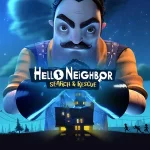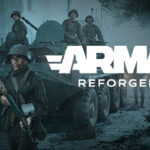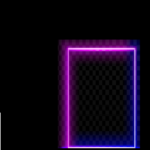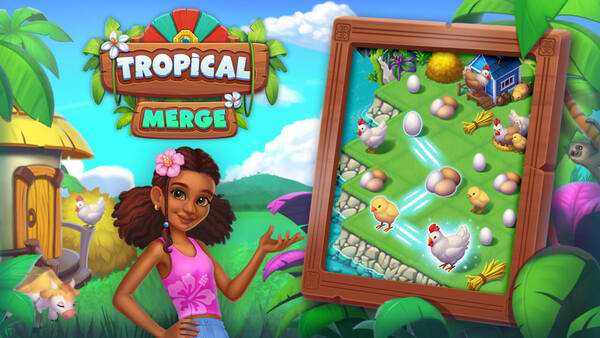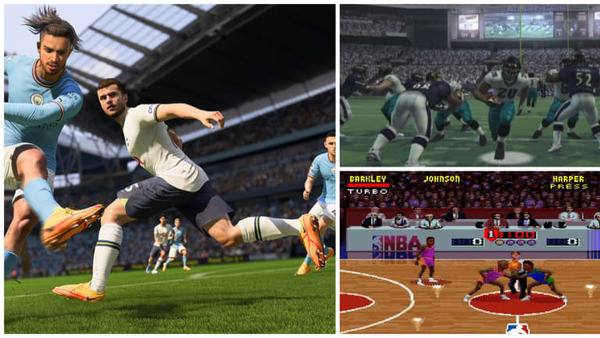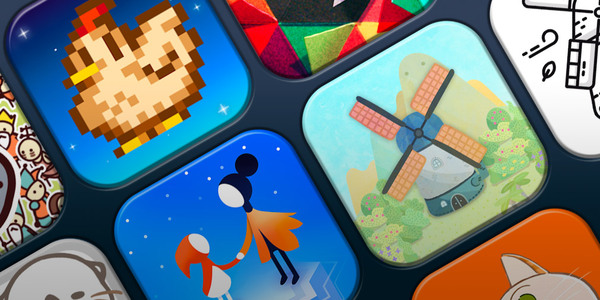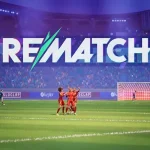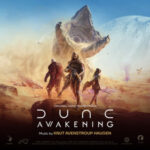God of War Ragnarök is the long-anticipated follow-up to the critically acclaimed God of War (2018), developed by Santa Monica Studio and published by Sony Interactive Entertainment. As a narrative-heavy action-adventure game exclusive to PlayStation 4 and PlayStation 5, it delivers an emotionally resonant and mechanically polished journey that not only concludes the Norse saga of Kratos and Atreus but also expands on everything that made its predecessor a modern classic. This article explores every aspect of God of War Ragnarök through ten comprehensive sections, arranged according to narrative flow and gameplay progression, offering a detailed analysis that includes features, innovations, criticisms, and its place in the gaming landscape.
The Weight of Legacy and Continuation
Following the events of God of War (2018), God of War Ragnarök carries the burden of expectations set by its groundbreaking predecessor. Players once again control Kratos, the reformed Greek god of war, as he tries to navigate fatherhood, fate, and the impending Norse apocalypse. Atreus, his son, has grown older and more curious about his destiny and divine nature. The game immediately establishes a more urgent tone. Fimbulwinter grips the world, gods are restless, and tensions mount toward Ragnarök. The narrative stakes are higher, and the emotional core is deeper, focusing on themes of identity, prophecy, and the nature of change. Returning characters like Mimir, Brok, and Sindri, alongside new figures like Thor and Odin, enrich the world with their dynamic roles and complex relationships. From its opening sequence, Ragnarök proves it is not merely a sequel but a culmination.
Gameplay Evolution and Combat Refinement
God of War Ragnarök expands and refines the combat system that made the 2018 reboot so compelling. Kratos retains the Leviathan Axe and Blades of Chaos from the beginning, while new mechanics and weapons are introduced gradually throughout the game. The combat feels more fluid and responsive, with smoother transitions between weapons and greater emphasis on parries, runic attacks, and enemy variety. Shield combat is significantly enhanced with different types of shields that offer distinct playstyles. Atreus plays a more active combat role with expanded abilities and autonomous decision-making, allowing for more strategic coordination. The enemies themselves are more intelligent and varied, encouraging players to experiment with skills and equipment. Boss fights are a massive improvement, featuring some of the most cinematic, challenging, and memorable encounters in the franchise. This variety elevates every battle into a unique and rewarding challenge.
Exploration and World Design
While the previous game took players across six of the nine realms, Ragnarök opens up all nine, each with its unique environmental storytelling, side quests, and puzzles. The semi-open world design remains, with areas becoming accessible through story progression or exploration. Realms like Vanaheim, Svartalfheim, and Asgard are visually stunning and narratively rich. Traversal has improved with faster boat travel, grappling points, and streamlined fast travel. Side quests, or "Favors," are more meaningful than ever, often providing character development or enhancing the world-building. Exploration is rewarded with lore entries, treasure maps, crafting materials, and character interactions that give the game a lived-in feel. Each realm feels distinct, with biomes, weather effects, and architectural styles that add flavor and depth to Kratos and Atreus's journey.
Storytelling and Character Development
The narrative is the heart of God of War Ragnarök. The writing, performances, and pacing reflect the maturity of both the studio and the characters. Kratos continues his journey toward emotional openness, struggling to protect Atreus while also letting him grow into his own destiny. Atreus, who is revealed to be the Norse god Loki, seeks to understand his role in the prophecy and his place in the world. Their dynamic evolves from mentor and student to two equals making difficult decisions. The antagonists, particularly Odin and Thor, are given nuanced and surprising portrayals that challenge traditional villain archetypes. Supporting characters like Freya have some of the most emotional arcs in the game, adding complexity to alliances and motivations. Dialogue is sharp, poignant, and often poetic, reinforcing the mythic tone while grounding the characters in relatable struggles.
Boss Fights and Major Encounters
Ragnarök elevates its boss design significantly over its predecessor. The 2018 game was criticized for repetitive troll encounters and a lack of major god fights. In contrast, Ragnarök delivers a wide range of cinematic, mechanically diverse boss battles against gods, beasts, and mythological figures. The opening fight with Thor sets the tone, showcasing destructible environments, complex attack patterns, and emotional storytelling through combat. Other standout encounters include duels with Heimdall, a harrowing battle with a corrupted Valkyrie queen, and the final confrontation with Odin. Each boss fight is tailored to its character, often accompanied by dynamic music and contextual dialogue that enhance immersion. These encounters are challenging but fair, encouraging players to master mechanics and use every tool at their disposal.
Atreus as a Playable Character
One of the boldest changes in Ragnarök is allowing players to control Atreus during certain chapters. These sections offer a fresh perspective and gameplay style. Atreus fights with a bow, magical arrows, and animal summons, making his combat feel agile and tactical. His sections also delve deeper into his personal story, including interactions with new characters like Angrboda. These segments are shorter than Kratos’s but are packed with narrative impact and gameplay variety. Puzzles and traversal are also tailored to his abilities, ensuring his chapters never feel like filler. The dual-protagonist approach strengthens the narrative, giving players a deeper understanding of both characters’ motivations and emotional journeys. The risk of splitting control between two characters pays off, adding dimension to the story and pacing.
Audio Design, Music, and Voice Acting
The sound design in God of War Ragnarök is impeccable. From the crunch of snow underfoot to the thud of the Leviathan Axe returning to Kratos’s hand, every sound effect reinforces immersion. Bear McCreary’s musical score is sweeping, epic, and deeply emotional. Each realm features a distinct musical motif, and boss fights are accompanied by grand orchestral themes that heighten intensity. Voice acting across the board is top-tier. Christopher Judge delivers a powerful, nuanced performance as Kratos, earning accolades for his emotional depth. Sunny Suljic returns as Atreus with greater maturity, capturing the nuances of a teenager struggling with identity and responsibility. Supporting roles, including Freya (Danielle Bisutti), Odin (Richard Schiff), and Thor (Ryan Hurst), are all standout performances. The combination of voice acting and musical composition elevates every moment, from quiet conversations to explosive battles.
Accessibility and Technical Performance
Santa Monica Studio made a significant effort to ensure that God of War Ragnarök is accessible to a broad range of players. The game features over 60 accessibility options, including visual aids, control remapping, subtitle customization, audio cues, and motor assistance tools. These settings allow players with various physical or cognitive needs to enjoy the game fully. On the technical side, Ragnarök runs smoothly on both PS4 and PS5. While PS5 offers 4K resolution, higher frame rates, faster loading times, and DualSense feedback, the PS4 version is impressively optimized. Performance modes allow players to choose between visual fidelity and fluid gameplay. The game also boasts minimal bugs, fast autosaves, and responsive controls. The attention to detail in optimization and accessibility underscores Santa Monica Studio’s commitment to player inclusivity.
Conclusion:
God of War Ragnarök is more than just a sequel; it is a landmark in modern game design. It brings closure to a story years in the making while daring to explore new themes, characters, and gameplay innovations. Kratos’s journey from vengeance to redemption, from war god to wise father, is one of the most compelling arcs in gaming history. Atreus's coming-of-age and the looming prophecy of Ragnarök are handled with grace and ambition. With breathtaking visuals, fluid combat, emotional storytelling, and a deeply immersive world, Ragnarök cements itself as one of the defining titles of this generation. It is not only a triumphant end to the Norse saga but also a glimpse at the boundless potential of the God of War franchise moving forward.

 99 Nights In The Forest Roblox
Among the wave of horror-themed survival games on Roblox, 99 Nights In The Forest carves out a unique place by combining psychological tension, environmental dread, and strategic multiplayer gameplay. Set in a cursed forest where players must survive 99 increasingly intense nights, this game delivers a blend of crafting, cooperation, base-building, and fear.
Read full review
99 Nights In The Forest Roblox
Among the wave of horror-themed survival games on Roblox, 99 Nights In The Forest carves out a unique place by combining psychological tension, environmental dread, and strategic multiplayer gameplay. Set in a cursed forest where players must survive 99 increasingly intense nights, this game delivers a blend of crafting, cooperation, base-building, and fear.
Read full review
 Roblox – Steal a Brainrot
Roblox – Steal a Brainrot is one of the most hilariously chaotic and strategic games to hit the Roblox platform. Combining stealth mechanics with absurd humor, this game lets players infiltrate guarded environments to steal strange NPCs known as brainrots.
Read full review
Roblox – Steal a Brainrot
Roblox – Steal a Brainrot is one of the most hilariously chaotic and strategic games to hit the Roblox platform. Combining stealth mechanics with absurd humor, this game lets players infiltrate guarded environments to steal strange NPCs known as brainrots.
Read full review
 Roblox: Grow a Garden
Explore the ultimate Roblox: Grow a Garden review—gameplay, farming tips, events, pros and cons, and expert strategies to thrive.
Read full review
Roblox: Grow a Garden
Explore the ultimate Roblox: Grow a Garden review—gameplay, farming tips, events, pros and cons, and expert strategies to thrive.
Read full review
 REMATCH
Experience the intensity of a rematch game as rivals clash once more to settle the score. Who will come out on top this time?
Read full review
REMATCH
Experience the intensity of a rematch game as rivals clash once more to settle the score. Who will come out on top this time?
Read full review
 Dune: Awakening
Dune: Awakening is a thrilling survival MMO set on the harsh desert planet Arrakis, where players must build, fight, and strategize to conquer the sands and thrive against deadly threats.
Read full review
Dune: Awakening
Dune: Awakening is a thrilling survival MMO set on the harsh desert planet Arrakis, where players must build, fight, and strategize to conquer the sands and thrive against deadly threats.
Read full review
 Zoonomaly
Zoonomaly is a post-apocalyptic survival horror game where players face mutated wildlife, explore hostile environments
Read full review
Zoonomaly
Zoonomaly is a post-apocalyptic survival horror game where players face mutated wildlife, explore hostile environments
Read full review




